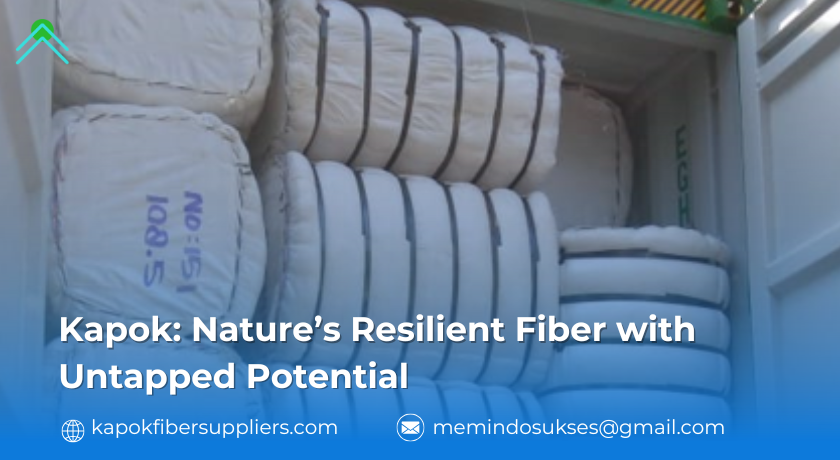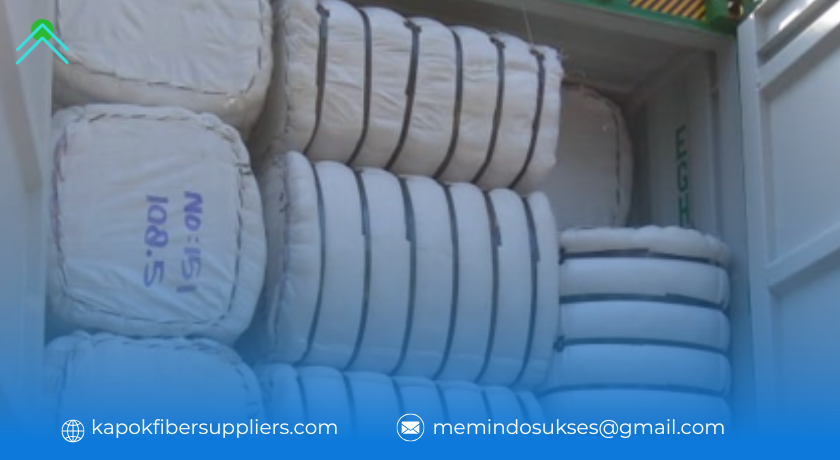
Kapok: Nature’s Resilient Fiber with Untapped Potential
In the world of sustainable materials, there’s one natural fiber that has quietly stood the test of time but is still largely unknown outside specific industries: kapok. Hailing from the tropical kapok tree (Ceiba pentandra), this lightweight, water-resistant fiber has been used for centuries for practical purposes such as filling for pillows and mattresses. However, as we look toward future solutions to address the environmental challenges we face, kapok is now emerging as a material with a wealth of untapped potential. From advancing technology to contributing to cultural preservation, kapok is becoming a symbol of how nature’s resources can be harnessed for a sustainable future.
The Hidden Wonders of Kapok
At first glance, kapok might seem like just another fluffy natural fiber, but its inherent properties make it much more than meets the eye. Derived from the large, spongy seed pods of the kapok tree, this fiber is not only remarkably buoyant and water-resistant, but it also has an air-filled structure that makes it one of the lightest materials known to humankind. These properties give kapok a wide range of uses beyond its traditional applications in bedding and life vests.
Unlike cotton, kapok is not heavily cultivated or widely processed in the global market. Yet, its unique characteristics give it the potential to reshape industries ranging from bioplastics to artificial intelligence (AI) components. The time has come to consider how kapok can contribute to modern challenges in innovation, sustainability, and even cultural heritage.
The Role of Kapok in Green Technology
1. Bio-Inspired AI Components
One of the most fascinating, but little-known, future uses for kapok lies in bio-inspired technology. Researchers are beginning to explore how the structure of kapok fibers can influence the design of lightweight, efficient components in robotics, drones, and AI-driven devices.
Kapok fibers, which are hollow and buoyant, could provide solutions in creating lightweight structures for artificial intelligence systems. For example, the lightweight and resilient nature of kapok could inspire the development of advanced AI components or sensors used in drones and autonomous vehicles, where reduced weight and high efficiency are critical. As the tech world looks to natural systems for innovation, kapok could play a surprising role in the future of bio-inspired design, contributing to sustainable, high-performance technology.
2. Biodegradable Plastics for the Future
As industries continue to search for viable alternatives to harmful plastics, kapok presents itself as a biodegradable, renewable resource with a promising future in bioplastics. Researchers are experimenting with using kapok fibers to reinforce biodegradable plastics, offering a lightweight, natural alternative that decomposes naturally after use.
Kapok-based bioplastics can potentially replace the conventional single-use plastic products that contribute massively to ocean pollution and landfill waste. With its fiber structure providing both strength and flexibility, kapok could be an essential component in the development of packaging materials, consumer goods, and even medical devices that do not leave a lasting environmental footprint.
Kapok’s Cultural Significance: A Tree of Life
Beyond its industrial and environmental uses, kapok holds a cultural and spiritual significance in many of the regions where it grows. Indigenous communities in Southeast Asia, Africa, and Central America have long revered the kapok tree not only for its valuable fiber but also for its symbolic meaning. In many cultures, the kapok tree is associated with protection, growth, and spiritual guidance.
In ancient Mayan civilization, for example, the kapok tree was considered sacred and was believed to represent the axis mundi, the central axis that connected the heavens, earth, and the underworld. This reverence for the tree reflects the relationship between local people and their environment, highlighting a deep understanding of nature’s role in supporting life.
The fibers themselves have also been used in traditional art. Indigenous craftspeople weave kapok fibers into intricate baskets, textiles, and ceremonial items, often combining the material’s natural beauty with symbolic meaning. As the world becomes more aware of cultural heritage and the importance of preserving these traditions, kapok offers a way to honor and protect these age-old practices.
Kapok in the Fashion Industry: A New Eco-Chic Trend
While kapok has been used historically for bedding and cushions, it’s only recently that it’s started making waves in the fashion world. Known for its lightness, softness, and hypoallergenic properties, kapok is being explored as an alternative material for eco-friendly fashion. Designers are beginning to experiment with kapok as a natural filling for jackets, bags, shoes, and other accessories.
Its biodegradable nature and ability to regulate temperature make kapok an ideal material for sustainable outerwear. For instance, kapok insulation can replace down feathers in jackets, offering warmth and comfort without the ethical concerns associated with animal-derived products. As the demand for cruelty-free, environmentally conscious fashion continues to rise, kapok could very well become the fabric of choice for those seeking a sustainable, chic alternative.
The Circular Economy and Kapok: A Perfect Fit
Kapok’s unique properties make it an ideal candidate for integration into the circular economy. Unlike traditional synthetic materials that contribute to landfill waste, kapok is fully biodegradable, meaning it can decompose without harming the environment. It’s also grown on trees that don’t require intensive farming practices, allowing it to be part of a regenerative agricultural system that produces fibers in a sustainable, low-impact manner.
Kapok’s role in the circular economy doesn’t just end with its biodegradability. As it continues to replace harmful synthetic alternatives in various industries, it can be a key part of reducing waste, closing material loops, and creating systems that prioritize reusability and sustainability. From packaging to textiles to bioplastics, kapok is an example of how natural fibers can create a positive, restorative impact on the planet.
Kapok in Disaster Relief: A Sustainable Solution
Another innovative, yet often overlooked, use of kapok is in disaster relief efforts. Due to its buoyancy and ability to remain dry even in wet conditions, kapok fibers have been used for centuries to create emergency flotation devices and life-saving cushions. With the growing frequency of natural disasters, such as floods and hurricanes, kapok could provide an easily accessible, renewable, and lightweight solution for disaster relief supplies. By using kapok in inflatable boats, emergency flotation devices, and relief cushions, aid organizations could ensure that resources are both sustainable and effective.
The Future of Kapok: A New Era of Innovation
While kapok has been used for centuries in traditional applications, it’s clear that its potential to address modern challenges is just beginning to be realized. From its contribution to green technologies, biodegradable products, and even cultural preservation, kapok is emerging as a versatile material with applications far beyond what most people know.
As we continue to embrace sustainability and circularity, kapok could become a cornerstone in industries seeking renewable, eco-friendly alternatives. The future of kapok is not just about reviving old uses, but about reimagining how this incredible material can meet the needs of a rapidly evolving world.
Embrace the Kapok Revolution
As we transition to more sustainable systems and industries, kapok offers an opportunity to innovate with nature at the forefront. Whether in fashion, bioplastics, technology, or disaster relief, kapok’s journey is just beginning. It’s time we give this extraordinary fiber the attention it deserves and start unlocking its vast potential for a greener, more circular world.

